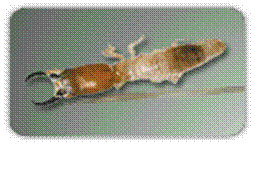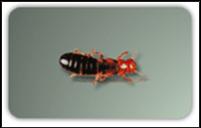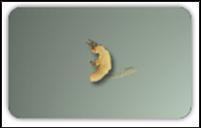



|
PEST KNOWLEDGE |
|
Here are some interesting facts and questions we have gathered from our clients. See how much you really know. |
|
Rats and Mice What is the best mouse/rat bait and how should I use it in my traps? Contrary to popular belief, cheese is not a good bait for mice. Peanut butter and chocolate work well as long as you don't put too much on the trap. Work the bait onto the trap's trigger so that it is hard for the mouse to get it off and it will be forced to climb onto the trigger.
How do I get rid of mice? Mice are best controlled by using traps, either snap traps, live traps, modified cages, paste or a combination of the five. When using snap traps, use different baits (chocolate, peanut butter, etc...) on the traps and place them where the mice are active – but where children and pets can't get to them. Also, seal exterior cracks and holes and put weatherstrips on doors to prevent new mice from entering. Mice only need a hole 1/4-inch in size to enter. Numerous mice indicate a more serious problem and should be dealt with by a GLOMAC technician.
Is it possible to get rid of rats? Yes, it is possible, but it takes a lot of effort. Traps are best for control because the bodies may be removed. With baits, you run the risk of the rodent dying inside a wall or in a place where you can not remove it, and it may cause an odor. In some cases, you need to use both traps and baits. Rodent bait should be used only in tamper-resistant rodent stations or where animals and children can’t get them. Baits should NEVER be placed unsecured where children or pets could access them. It may be better to hire a professional. You can contact GLOMAC Marketing to get a free estimate of the cost for mouse/rat services in your area.
Cockroaches can wreak havoc on your home. To win the war in cockroach control, here’s what you should know: · Entry: Cockroaches can enter your home in many different ways, from the outside through cracks and crevices, vents, sewer and drain pipes. We even bring them in on products like grocery bags, boxes, purses and on our person! · Ideal environment: Your home is an ideal breeding ground most species of cockroaches. With plenty of food, warmth, water and nesting sites, they can remain active all year round. · Reproduction: Cockroaches reproduce quickly. For every one you see there can be many, many more hiding and multiplying behind your walls. · Evasiveness: Because cockroaches are nocturnal, if you’ve seen one, you probably haven’t seen them all. The few cockroaches you see by day could mean they were likely forced out by overcrowding; a possible sign of severe infestation. · Allergies/Asthma: The dust created by cast-off cockroach skins, dead bodies and droppings can aggravate allergies, especially in children and sensitive individuals. · Do-it-yourself ineffectiveness: Cockroaches are better at hiding than you are at finding them, and their eggs are naturally protected from insecticides. Without special equipment, materials and know-how, cockroach control can be a losing battle.
Cockroaches and "The Bomb"
a cockroach could live a long time, perhaps a month, without its head. Bad News Wanna Race?
TERMITES
FAMILY IN THE COLONY
Alate Queen King
Nymph Worker Soldier
MUCH MORE TO COME!!! |


|
Macrotermes Gilvus (Mound Building termite) mostly on garden considered as large species darker in color (abdominal part) with two sizes of soldiers
|
|
Microcerotermes Losbanosensis (Los Banos termite)
smaller in size than coptotermes species very sensitive got its name from area where it was discovered
|
|
Coptotermes Vastator (Philippine Milk termite)
workers are white in color considered as the most destructive of all the Philippine termite species
|
|
Macrotermes Gilvus (Mound Building termite)
mostly on garden considered as large species darker in color (abdominal part) h two sizes of soldiers
|






|
GLOMAC & MACGLO (qc) PEST CONTROL services |
|
“WE ARE THE BEST NOTHING LESS” |



